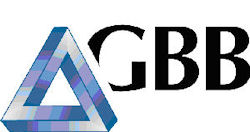Team:Groningen/Lab/experiments/Motility assay
From 2013.igem.org
(Difference between revisions)
| Line 31: | Line 31: | ||
<h1>Motility assay</h1> | <h1>Motility assay</h1> | ||
To test the difference in motility between the wild type <i>Bacillus subtilis</i> 168 strain and the both knockout strains, ΔCheY and ΔCheYΔDes, a motility test is done. | To test the difference in motility between the wild type <i>Bacillus subtilis</i> 168 strain and the both knockout strains, ΔCheY and ΔCheYΔDes, a motility test is done. | ||
| - | The plates are inoculated in 25 | + | <br>The plates are inoculated in 25°C and 37°C to determine the different behaviour of the strain at different temperatures, as these are the temperatures we expect changes when the Pdes-cheY construct is inserted into the ΔcheYΔdes strain. In general we expect the wildtype strain to be more motile than the knock out strains. |
The design we used for our motility assay is a simple one. The LB agar plates are made with the normal amount of LB-broth as nutrient, but with a reduced amount of agar. Low concentrations of agar are needed to allow movement through the medium, but when the concentrations are getting too low the observed movement can be caused by dispersal and turbulence during movement. | The design we used for our motility assay is a simple one. The LB agar plates are made with the normal amount of LB-broth as nutrient, but with a reduced amount of agar. Low concentrations of agar are needed to allow movement through the medium, but when the concentrations are getting too low the observed movement can be caused by dispersal and turbulence during movement. | ||
| - | To determine in which medium the strains have a higher motility two concentrations of agar are tested, 0.4% and 0.7%. For the reproducibility of the project, it is decided to pipet 13 ml agar to all of the plates. | + | <br>To determine in which medium the strains have a higher motility two concentrations of agar are tested, 0.4% and 0.7%. For the reproducibility of the project, it is decided to pipet 13 ml of agar to all of the plates. |
On every plate 10 µl of liquid culture with an OD<sub>600</sub> of 0.4. Two different approaches are used for injecting the samples on the agar; one is to pipet it directly in the gel, the other one is to inject the sample on top of the agar. | On every plate 10 µl of liquid culture with an OD<sub>600</sub> of 0.4. Two different approaches are used for injecting the samples on the agar; one is to pipet it directly in the gel, the other one is to inject the sample on top of the agar. | ||
The assay is performed in triplo for each strain and approach, and the plates are inoculated for 16 hours. The bacteria that are motile should spread out over the agar creating a cloudy look while the non-motile bacteria should stay at the spot. How quickly the bacteria spread from their spot to the edge can be used as an indicator of how fast they move. | The assay is performed in triplo for each strain and approach, and the plates are inoculated for 16 hours. The bacteria that are motile should spread out over the agar creating a cloudy look while the non-motile bacteria should stay at the spot. How quickly the bacteria spread from their spot to the edge can be used as an indicator of how fast they move. | ||
Revision as of 22:38, 4 October 2013
Motility assay
To test the difference in motility between the wild type Bacillus subtilis 168 strain and the both knockout strains, ΔCheY and ΔCheYΔDes, a motility test is done.The plates are inoculated in 25°C and 37°C to determine the different behaviour of the strain at different temperatures, as these are the temperatures we expect changes when the Pdes-cheY construct is inserted into the ΔcheYΔdes strain. In general we expect the wildtype strain to be more motile than the knock out strains. The design we used for our motility assay is a simple one. The LB agar plates are made with the normal amount of LB-broth as nutrient, but with a reduced amount of agar. Low concentrations of agar are needed to allow movement through the medium, but when the concentrations are getting too low the observed movement can be caused by dispersal and turbulence during movement.
To determine in which medium the strains have a higher motility two concentrations of agar are tested, 0.4% and 0.7%. For the reproducibility of the project, it is decided to pipet 13 ml of agar to all of the plates. On every plate 10 µl of liquid culture with an OD600 of 0.4. Two different approaches are used for injecting the samples on the agar; one is to pipet it directly in the gel, the other one is to inject the sample on top of the agar. The assay is performed in triplo for each strain and approach, and the plates are inoculated for 16 hours. The bacteria that are motile should spread out over the agar creating a cloudy look while the non-motile bacteria should stay at the spot. How quickly the bacteria spread from their spot to the edge can be used as an indicator of how fast they move.
 "
"







